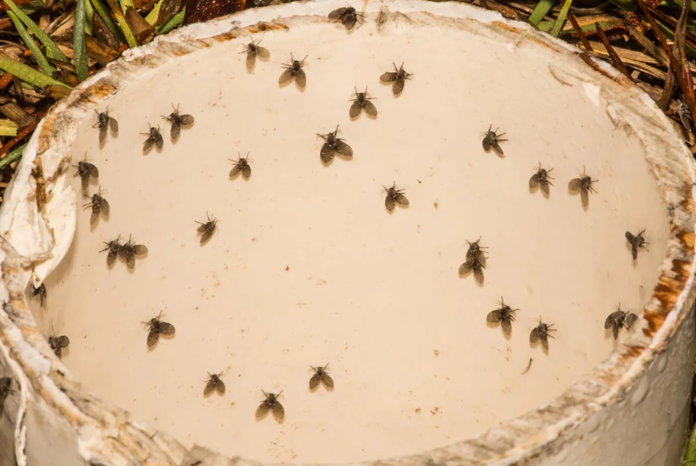Ever spotted those tiny black flying bugs in your house and wondered what they are? Often mistaken for fruit flies, these little critters could be a variety of insects ranging from mosquitoes to gnats to drain flies. Understanding the type of bug you’re dealing with is crucial for effective elimination and prevention.
In this comprehensive guide, we’ll delve into the characteristics of eight common small black flying bugs, their breeding sites, and how to get rid of them. Let’s unravel the mystery behind these pesky intruders!
- No-See-Ums:
- Size: Less than 1/8 inch
- Breeding Site: Shaded areas in marshes
- Harmful to Humans: Yes
- Description: No-see-ums, aptly named for their tiny size, are often gray or black in color and possess a humpbacked appearance. While seemingly innocuous, the females can deliver painful bites as they feed on blood to reproduce.
- Elimination Tips: Employing air conditioning, carbon dioxide traps, and fine mesh window screens can help keep these agile fliers at bay.
- Fungus Gnats:
- Size: 1/16 to 1/8 inch
- Breeding Site: Houseplants
- Harmful to Humans: No
- Description: These tiny flying insects thrive in moist environments and are commonly found around houseplants and garden areas. While they don’t directly harm plants, their larvae can cause damage by feeding on roots.
- Elimination Tips: Utilize sticky traps and monitor watering practices to combat fungus gnat infestations.
- Mosquitoes:
- Size: 1/4 to 3/8 inch
- Breeding Site: Stagnant water
- Harmful to Humans: Yes
- Description: Mosquitoes, infamous for their blood-sucking behavior, are attracted to standing water where they lay their eggs. Their presence indoors can be bothersome, requiring prompt action.
- Elimination Tips: Indoor insect foggers, coupled with preventive measures like repairing screens and utilizing air conditioning, can help control mosquito populations.
- Drain Flies:
- Size: 1/8 inch
- Breeding Site: Decaying organic matter
- Harmful to Humans: No
- Description: Also known as sink flies or moth flies, drain flies prefer damp environments such as drains and sewage systems. While not harmful, they can become a nuisance if left unchecked.
- Elimination Tips: Thoroughly clean drains and consider DIY solutions like apple cider vinegar traps to eradicate drain fly populations.
- Houseflies:
- Size: 1/4 inch
- Breeding Site: Decaying organic matter
- Harmful to Humans: Yes
- Description: Houseflies pose health risks due to their association with feces and decaying material, which can harbor harmful pathogens. Proper sanitation is essential for managing housefly infestations.
- Elimination Tips: Regular sanitation practices, including proper waste disposal and sealing entry points, are key to preventing housefly proliferation.
- Phorid Flies:
- Size: 1/16 to 1/8 inch
- Breeding Site: Damp, decaying material
- Harmful to Humans: No
- Description: These small flies, also known as humpbacked or scuttle flies, are attracted to decomposing organic matter. Their erratic flight patterns and presence near drains indicate a potential infestation.
- Elimination Tips: Remove breeding sources, clean affected areas, and implement preventive measures such as sealing entry points.
- Flying Ants:
- Size: 3/4 inch
- Breeding Site: Wood
- Harmful to Humans: No
- Description: Flying ants are reproductive members of ant colonies, often mistaken for carpenter ants due to their similar appearance. While less likely to infest homes, they can be drawn indoors by artificial light and exposed food.
- Elimination Tips: Reduce outdoor lighting and maintain cleanliness to deter flying ants from entering your home.
Conclusion:
Identifying and addressing small black flying bugs in your house requires a strategic approach tailored to the specific insect species. Whether it’s implementing DIY solutions or seeking professional pest control services, timely action is crucial to safeguarding your home from these unwanted guests. By understanding their habits and breeding sites, you can effectively combat infestations and enjoy a bug-free living space. Stay vigilant, and bid farewell to those pesky intruders for good!
Source of the picture : bobvila










